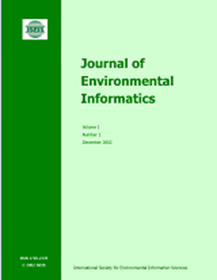Decentralized Algae Removal Technologies for Lake Diefenbaker Irrigation Canals: A Review
IF 5.4
1区 环境科学与生态学
Q1 ENVIRONMENTAL SCIENCES
引用次数: 0
Abstract
Lake Diefenbaker Irrigation Canals in Canada are crucial in providing water for irrigation, preventing droughts and floods, and supporting the Saskatchewan agriculture industry and economy. Unfortunately, filamentous algal blooms occur every summer in Lake Diefenbaker Irrigation Canals. These algae are not toxic but a nuisance. They block farmers’ pumps and reduce irrigation water flow rates. Currently, the Water Security Agency periodically adds the algaecide Magnacide H. to control the algal blooms, which is costly (i.e., one million dollars per year for the Lake Diefenbaker M1 Irrigation Canal only) and requires effort to dewater the canal to protect fish. Therefore, algae removal before the canal water enters farmer’s pumps might be a cost-effective alternative, especially the removal of microalgae during the initial stages of growth in June of each year. This paper has summarized and evaluated algae removal technologies, considering their advantages, disadvantages, and potential solutions for addressing the challenges and limitations associated with these technologies. Five algae removal technologies were identified as promising, which are suspended air flotation (SAF), dissolved air flotation (DAF), hydrodynamic cavitation, spiral blade centrifuge, and coagulation. Among them, SAF seems the most suitable option, while DAF and hydrodynamic cavitation offer eco-friendly advantages. Further research and pilot testing are needed to determine the costeffective and feasible algae removal technology for Lake Diefenbaker Irrigation Canals.迪芬贝克湖灌渠的分散式除藻技术:综述
加拿大的迪芬贝克湖灌溉渠对于提供灌溉用水、防止干旱和洪水以及支持萨斯喀彻温省的农业和经济至关重要。不幸的是,迪芬贝克湖灌溉渠每年夏天都会出现丝状藻类大量繁殖的现象。这些藻类没有毒性,但会造成滋扰。它们会阻塞农民的水泵,降低灌溉水流量。目前,水安全局定期添加灭藻剂 Magnacide H 来控制藻华,但这种方法成本高昂(例如,仅迪芬贝克湖 M1 灌溉运河每年就需要 100 万美元),而且需要努力疏通运河以保护鱼类。因此,在运河水进入农民水泵之前清除藻类可能是一种具有成本效益的替代方法,尤其是在每年 6 月藻类生长初期清除微藻。本文对除藻技术进行了总结和评估,考虑了这些技术的优缺点以及应对挑战和局限性的潜在解决方案。确定了五种有前景的除藻技术,分别是悬浮气浮(SAF)、溶气气浮(DAF)、水动力空化、螺旋叶片离心机和混凝法。其中,悬浮气浮似乎是最合适的选择,而溶气气浮和水动力气蚀则具有生态友好的优势。要确定迪芬贝克湖灌渠成本效益高且可行的除藻技术,还需要进一步的研究和试点测试。
本文章由计算机程序翻译,如有差异,请以英文原文为准。
求助全文
约1分钟内获得全文
求助全文
来源期刊

Journal of Environmental Informatics
ENVIRONMENTAL SCIENCES-
CiteScore
12.40
自引率
2.90%
发文量
7
审稿时长
24 months
期刊介绍:
Journal of Environmental Informatics (JEI) is an international, peer-reviewed, and interdisciplinary publication designed to foster research innovation and discovery on basic science and information technology for addressing various environmental problems. The journal aims to motivate and enhance the integration of science and technology to help develop sustainable solutions that are consensus-oriented, risk-informed, scientifically-based and cost-effective. JEI serves researchers, educators and practitioners who are interested in theoretical and/or applied aspects of environmental science, regardless of disciplinary boundaries. The topics addressed by the journal include:
- Planning of energy, environmental and ecological management systems
- Simulation, optimization and Environmental decision support
- Environmental geomatics - GIS, RS and other spatial information technologies
- Informatics for environmental chemistry and biochemistry
- Environmental applications of functional materials
- Environmental phenomena at atomic, molecular and macromolecular scales
- Modeling of chemical, biological and environmental processes
- Modeling of biotechnological systems for enhanced pollution mitigation
- Computer graphics and visualization for environmental decision support
- Artificial intelligence and expert systems for environmental applications
- Environmental statistics and risk analysis
- Climate modeling, downscaling, impact assessment, and adaptation planning
- Other areas of environmental systems science and information technology.
 求助内容:
求助内容: 应助结果提醒方式:
应助结果提醒方式:


